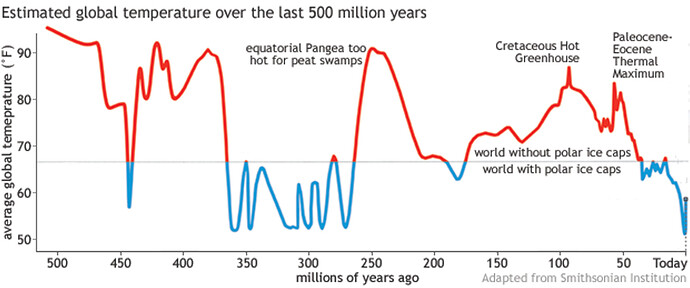Yes, reduced population will put less strain on the environment and limit carbon emissions and other pollutants. This is 100% factual and one of the most meaningful things that can be done today besides living off the grid.
Demand for oil is supposedly sky-rocketing right now. To claim we aren’t passed the “point of no return” that has been proclaimed for decades now or are not inevitably heading towards it is naive to me. We can certainly push for some mitigation and cleaner energy where affordable moving forward but in 50-100 years it will be about adaptation. I’m sure many want us to just keep throwing billions of dollars their way.
Yes, actually it is. If your having children causes tremendous pain and suffering and deaths to many people in the future, it is very much a valid question to consider. Why wouldn’t it be? You are just unwilling to follow your own arguments through to their logical conclusion. Instead you would rather assume where you choose to draw lines in life must be where I and everyone else should draw their own lines. If you want to convert an outlet in your house and drive an electric vehicle, have at it. I don’t want a car that must be charged nor a battery that cost $15,000 to replace when the warranty is up.
What is and isn’t a fundamental human right is in the eye of the beholder. I believe freedom of choice is a fundamental human right just as I believe my right to bear arms and defend my family is a fundamental human right. For most of world history it was a “fundamental human right” for people to do with their property (slaves and women) as they saw fit! What you claim is not under question actually is. It never ceases to amaze me at how bad people are at trying to see outside the little bubble they live in.
Bingo. Fossil fuels provide tremendous good in the world and as I noted, they basically ended slavery. As a first world country we can certainly make moves towards cleaner energy but expecting the rest of the world to do it and thinking all Americans are in equal financial positions to foot the enormous clean energy bills needed is silly. We have already wasted many billions of dollars on CCR.
Nuclear is great but yes, there are certainly safety concerns but I’m guessing the completely unbiased
World nuclear association is accurate here
- There have been two major reactor accidents in the history of civil nuclear power – Chernobyl and Fukushima Daiichi. Chernobyl involved an intense fire without provision for containment, and Fukushima Daiichi severely tested the containment, allowing some release of radioactivity.
- These are the only major accidents to have occurred in over 18,500 cumulative reactor-years of commercial nuclear power operation in 36 countries.
- The evidence over six decades shows that nuclear power is a safe means of generating electricity. The risk of accidents in nuclear power plants is low and declining. The consequences of an accident or terrorist attack are minimal compared with other commonly accepted risks. Radiological effects on people of any radioactive releases can be avoided.
The problem with many forms of alternative energy is the immensely high upfront costs with switching and the very long time it takes to see any return.
I prefer to live in reality and throw money at fixable problems as opposed to living in make-believe land.
Vinnie

